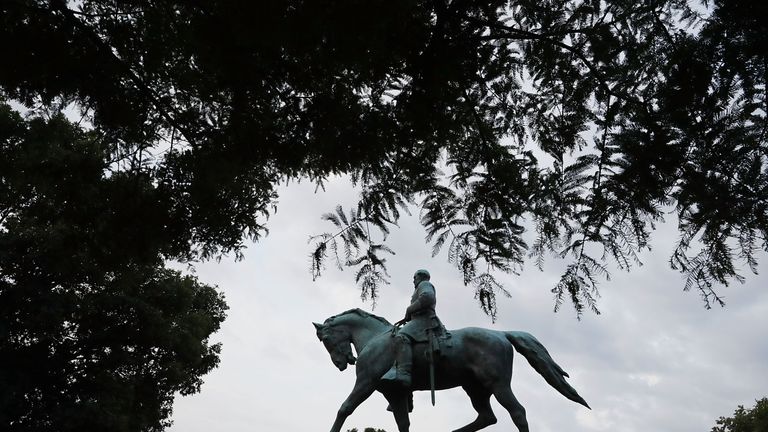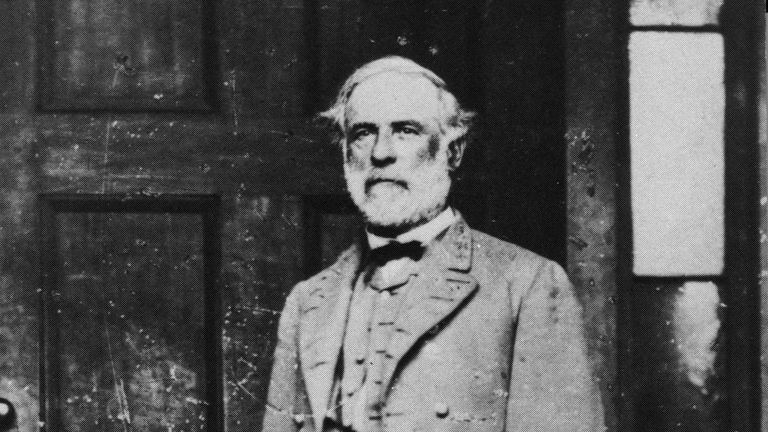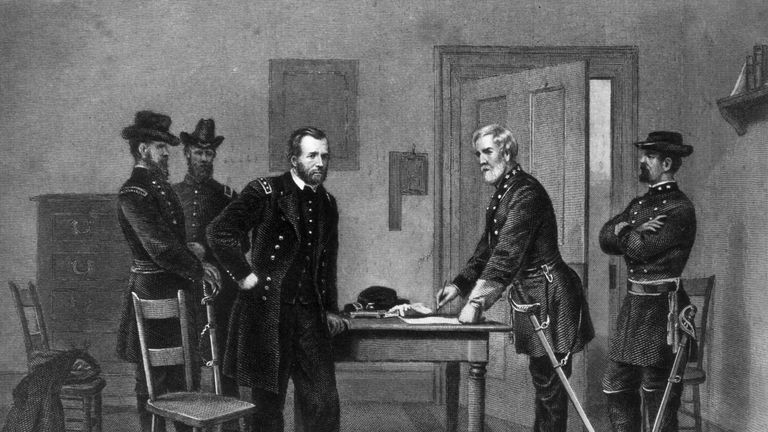Why is Charlottesville statue of Robert E Lee so controversial?
Many view Robert E Lee as a symbol of racism and America's slave-holding past - but white supremacists and neo-Nazis disagree.
Wednesday 16 August 2017 23:21, UK
Plans in Charlottesville to remove a statue of Robert E. Lee sparked violent clashes between white supremacists and anti-racism demonstrators over the weekend. But why?
Born in 1807, Lee was a commander in the Confederate army during the American Civil War.
The monuments in his memory - as well as the many schools named after him - have become so controversial because many today view him as a symbol of racism and America's slave-holding history.
Lee distinguished himself in various battles during the US-Mexico War that began in 1846.
When tensions heated around southern secession, he was offered a post to lead the anti-slavery Union forces against the pro-slavery South.
But Lee declined - and he resigned from the US army because he had reservations about fighting against his home state of Virginia.
Even though he had little experience leading troops, he accepted a role commanding the Virginia state forces of the Confederacy - 11 states that wanted to establish a new nation where the institution of slavery would be protected.
Political scientists say he had a "mixed record" of military endeavours throughout the civil war, and he was famously defeated at Gettysburg by Union Major General George Meade.
Just a few weeks after he became the general in chief of the armies of the Confederate states in 1865, Lee surrendered to Union General Ulysses S Grant.
Lee had inherited a few slaves from his mother and married into one of the wealthiest slave-holding families in Virginia.
Documents show he was cruel to his slaves and encouraged his overseers to severely beat any who were captured after trying to escape.
After the civil war ended, Lee resisted efforts to build Confederate monuments in his honour as he wanted the nation to move on from the conflict.
But following his death in 1870, a revisionist narrative called "The Lost Cause" placed Lee as its central figure - and argued the war had not been about slavery but high constitutional ideals.
As The Lost Cause grew in popularity, proponents pushed to memorialise Lee - and monuments went up in the 1920s just as the Ku Klux Klan experienced a resurgence, and laws mandating segregation were adopted.
The Robert E Lee statue in Charlottesville was erected in 1924. Earlier this year, the city's council had voted to remove it from a park.
Opponents of the move included white supremacists and neo-Nazis who revered Lee and the Confederacy.
On Saturday, rallies were held to defend the Lee statue - but the violence resulted in at least three deaths, including that of a female counter-protester.






